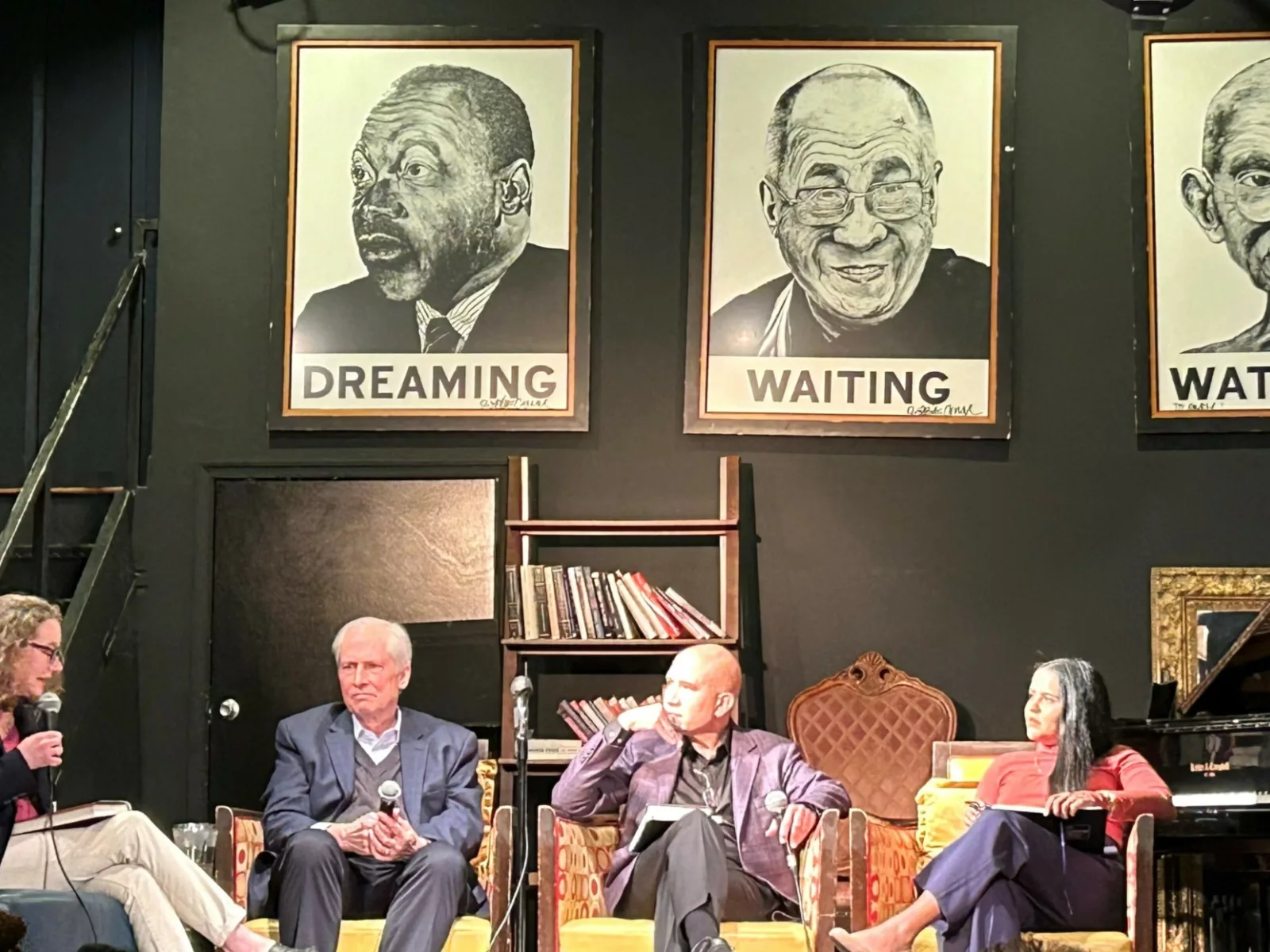Protests and partisanship may have pundits wondering whether the bipartisan moment in criminal justice reform has reached its end, but in reality coalitions across the political spectrum are still dedicated to shrinking jail populations and reforming harmful systems. Nowhere is that more true than in Ohio. Right now, lawmakers on both sides of the aisle are working together to dismantle the state’s cash bail status quo. Both chambers in the state Legislature introduced bills earlier this year to fundamentally reshape a system of wealth-based detention that treats people unequally based on their financial resources while doing little to promote community safety.
Under the current system, Ohio courts largely rely on bond schedules to set conditions for pretrial detention. More severe crimes typically have higher dollar amounts, making an Ohioan’s ability to return to their homes, jobs, and families before trial predicated on how much money they have — with little consideration for their ability to show up to court or remain arrest-free.
But under Senate Bill 182 and House Bill 315, all defendants would be released pretrial unless a judge has concerns that someone might miss a court date or fail to avoid a new arrest. In that case, the judge could step in to set a conditions of release hearing. The bills also limit how much time a judge has to schedule the hearing to 48 or 72 hours, reducing the number of people who sit in jail awaiting an appearance.
“Bail reform at the core of SB 182 and HB 315 will take a major step in ensuring Ohioans charged with low level offenses are able to keep their lives on track while having their presumption of innocence respected, regardless of their means or income,” said Republican state Sen. Rob McColley, who introduced the bill alongside Republican Sen. Steve Huffman.
Broad Coalitions and Diverse Co-Sponsors
The reform efforts are supported by both liberal and conservative groups and would build on Ohio’s history of bipartisan criminal justice reform. In recent years, lawmakers have come together to reform the state’s civil asset forfeiture law and came close to reclassifying certain drug offenses from felonies to misdemeanors.
“This particular legislation, with not only the coalitions supporting it but also the diverse cosponsors on it, highlights that the problems in any given state don’t have to face only partisan solutions,” said Micah Derry, Arnold Ventures’ bail reform campaign director who previously worked on criminal justice reform in Ohio with the libertarian group Americans for Prosperity. “That kind of range of supporters has been a hallmark that we haven’t really seen anywhere else.”
The proposed legislation comes after the state supreme court recommended in a 2019 report that the state “consider all alternatives to pretrial detention” and do everything possible to avoid cash bail. The report cited a study from the Buckeye Institute, an Ohio free-market think tank, that found a day in jail costs about 13 times as much as supervised release.
Andrew Geisler, a legal fellow with the Buckeye Institute, said the current legislation would reform the bail process in a way that makes sense fiscally and also supports due process. An economic research model from the Buckeye Institute found that bail reform could save the state around $67 million per year, making the reforms appealing to many conservative lawmakers.
Amount bail reform could save the state of Ohio each year
“Cash bail is not a good public safety tool,” he said. “It does not keep anyone safe, and it allows cash to be an illegitimate proxy for safety. If you’re dangerous but deep-pocketed, you can pay your way out of jail and walk free. But somebody who doesn’t have as much money, they sit in jail for days and weeks and they may not be able to keep their job, may have a hard time with custody situations, might have a hard time with housing.”
Rep. David Leland, a Democrat who introduced the bill with Republican Rep. Brett Hillyer in the house, said that’s one of the reasons the bill is so important.
“On any given day, over 60 percent of the people in Ohio jails have not been convicted of a crime — they’re in jail because they can’t afford to pay bail,” Leland said. “If someone’s behind bars because they can’t afford their bail, they could lose their job, their home, or even custody of their children. Bail was created to ensure the return of the accused to trial — it was never intended to keep people incarcerated indefinitely.”
In addition to those collateral consequences, Geisler also pointed out that people who spend time in jail, whether they’re guilty or innocent, are more likely to be arrested for a crime in the future.
Cash bail is not a good public safety tool. It does not keep anyone safe, and it allows cash to be an illegitimate proxy for safety.Andrew Geisler legal fellow with the Buckeye Institute
Claire Chevrier, a former policy counsel with the ACLU of Ohio who led the organization’s bail reform campaign, said that while the bills may have looked somewhat different if Ohio didn’t have a Republican supermajority in both chambers of the legislature, bail reform was still an area where the ACLU could easily work across the aisle to enact reforms.
“While we disagree on a lot of other things, this is one area where we all very strongly agree,” she said. “The bill is powerful, the bill is bipartisan, and the bill would get a lot of people out of jail who don’t need to be in jail, so we strongly support it as it’s currently written.”
Chevrier said she especially supports the time limits on how long judges have to set conditions of release hearings. Research shows that people who remain in jail pretrial for three or more days are substantially more likely to lose their job, home, or even start the process of losing custody of their children.
While lawmakers on both sides of the aisle support the reforms, there is still resistance from bail bondsmen, who stand to lose money if their industry is upended. There is also opposition from some prosecutors who “are stuck in the 1980s, 1990s mental model,” Derry said. Geisler said advocates are talking to those prosecutors and law enforcement officials to see if their issues are resolvable while keeping the integrity of the bills.
Learning From Other States
Advocates hope that committees will pick up the bills and prioritize them in the coming weeks, but are wary of the careful path that reform bills have to walk. Just last year, widely supported a criminal justice reform bill — Senate Bill 3 — that would have declassified some drug felonies to misdemeanors passed the Ohio senate but died in the house.
The key advantage for bail reform is support from the judiciary and law enforcement.
For example, Chief Justice Maureen O’Connor opposed SB3 but supports bail reform and has spoken out about its importance. In fact, in March the supreme court expanded the reform mandate. Under these new rules Ohio’s 28 counties with both multiple municipal courts and county courts must use a uniform bail schedule that includes release on a personal recognizance bond as the initial option. But the chief justice has noted that rulemaking isn’t enough.
“Bail reform in Ohio needs to be written into the tablets of our laws, into statutes codified,” O’Connor noted in her annual State of the Judiciary address. “Bail reform would add permanence and stability to our whole widely shared endeavor and shield our progress from the more fluid avenues of rulemaking.”
Another difference for the bail bills: Many of the law enforcement players who had issues with other reforms are aligned with O’Connor in support, including the Law Enforcement Action Partnership, a nonprofit group of current and former police, judges, prosecutors, and other criminal justice professionals.
Ohio advocates were able to keep the judiciary and law enforcement at the table by studying where other states had struggled to maintain a united coalition and adjusting provisions of the bail law that had sparked controversy. As a result, the Ohio bail reform doesn’t eliminate judicial discretion — in fact it broadens discretion — and also still allows financial conditions to be set on release in some circumstances. With these changes, the Ohio bail bill avoids the pitfalls that other states encountered when they tried to eliminate discretion from bail entirely.
“It’s clear the joint sponsors saw that and came up with a bill that really could be a model going forward for other jurisdictions,” Chevrier said.


















